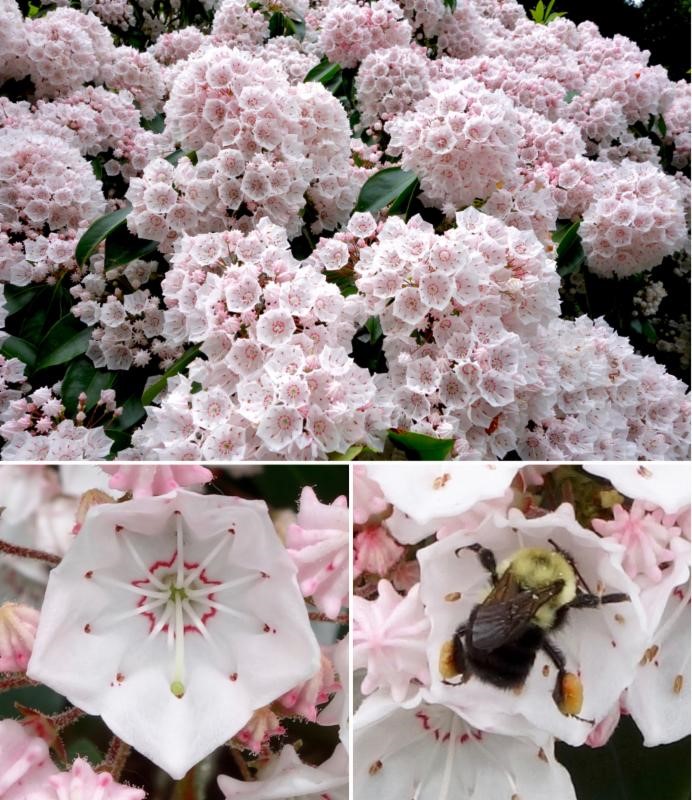This week has been close to perfect when it comes to rhododendrons and azaleas at the Arnold Arboretum of Harvard University. Both belong to the Ericaceae, a family of plants that also includes blueberries, cranberries, and the mountain laurel, Kalmia latifolia. The Arnold has two stunning groupings of mountain laurels, and they are just beginning to get serious about floral display (upper image, from 2013). The first cluster is just down from the peak of Bussey Hill and is filled with diverse cultivars created by the maestro of mountain laurel breeding, Richard Jayne. The second is just beyond Rhododendron Dell, on Hemlock Hill Road.
Beyond the clouds of flowers, the amazing thing about mountain laurels is the manner in which they disperse pollen. Have a close look at the flower at bottom left and you will see ten curved filaments emanating from the center of the flower. These are the stamens, whose tips contain pollen. The brownish tip of each stamen can barely be seen since it is buried in a recess or “pocket” of the fused petals of the corolla. Ten stamens, ten pockets. In the small floral bud, the stamens are originally straight, but as the flower expands, each stamen is bent backwards, creating (for the mechanically inclined) a cantilever spring under great stress. When a bee comes along (bottom right), contact with the stamen releases the spring and pollen is catapulted, many inches, in the blink of an eye.

While picking flowers is strictly prohibited at the Arnold Arboretum, there are no rules against interacting with the stamens of mountain laurels. Bring a pen or pencil, and carefully tap against a stamen to see the results! I hope you will be amazed at what nature has wrought.